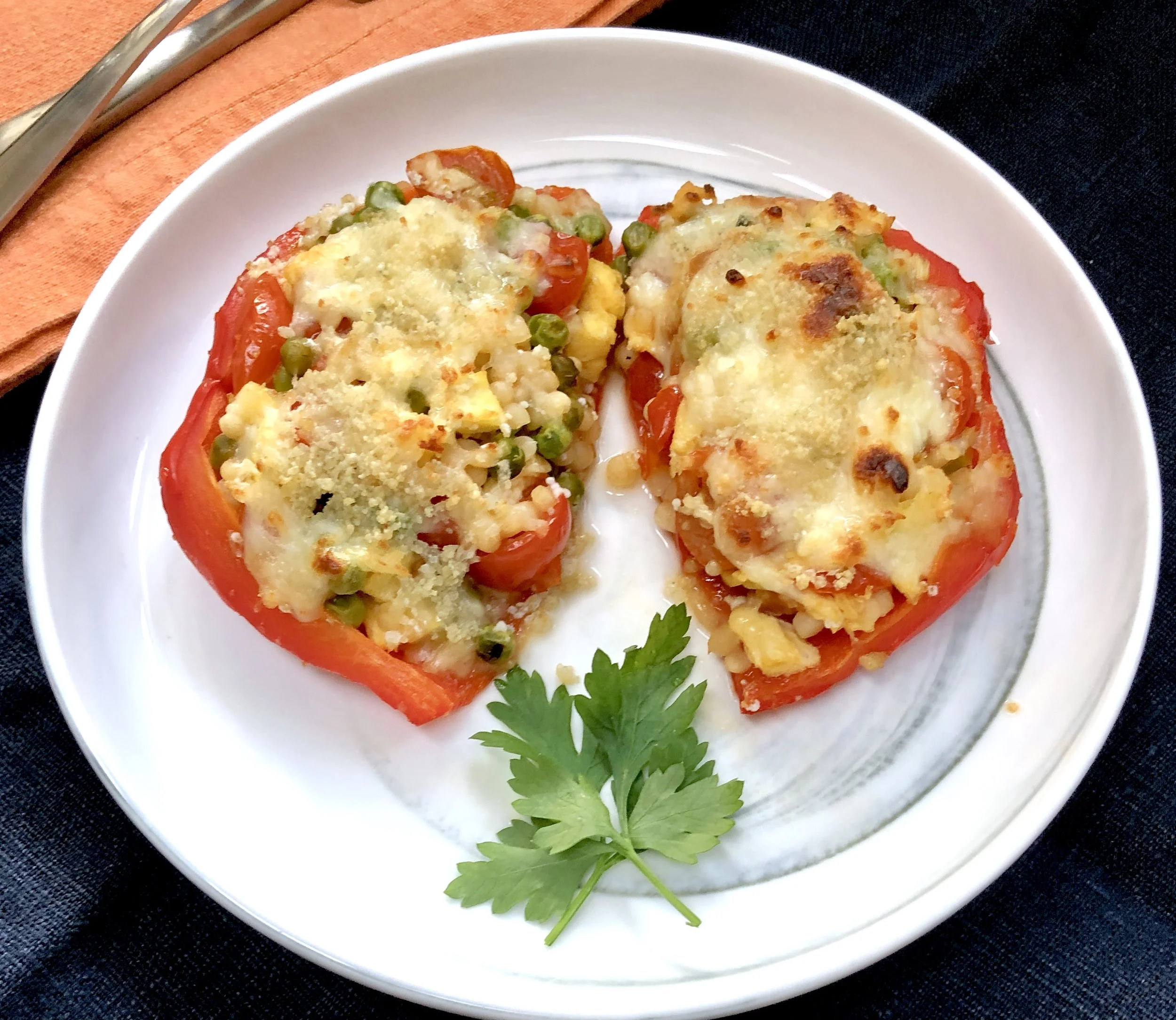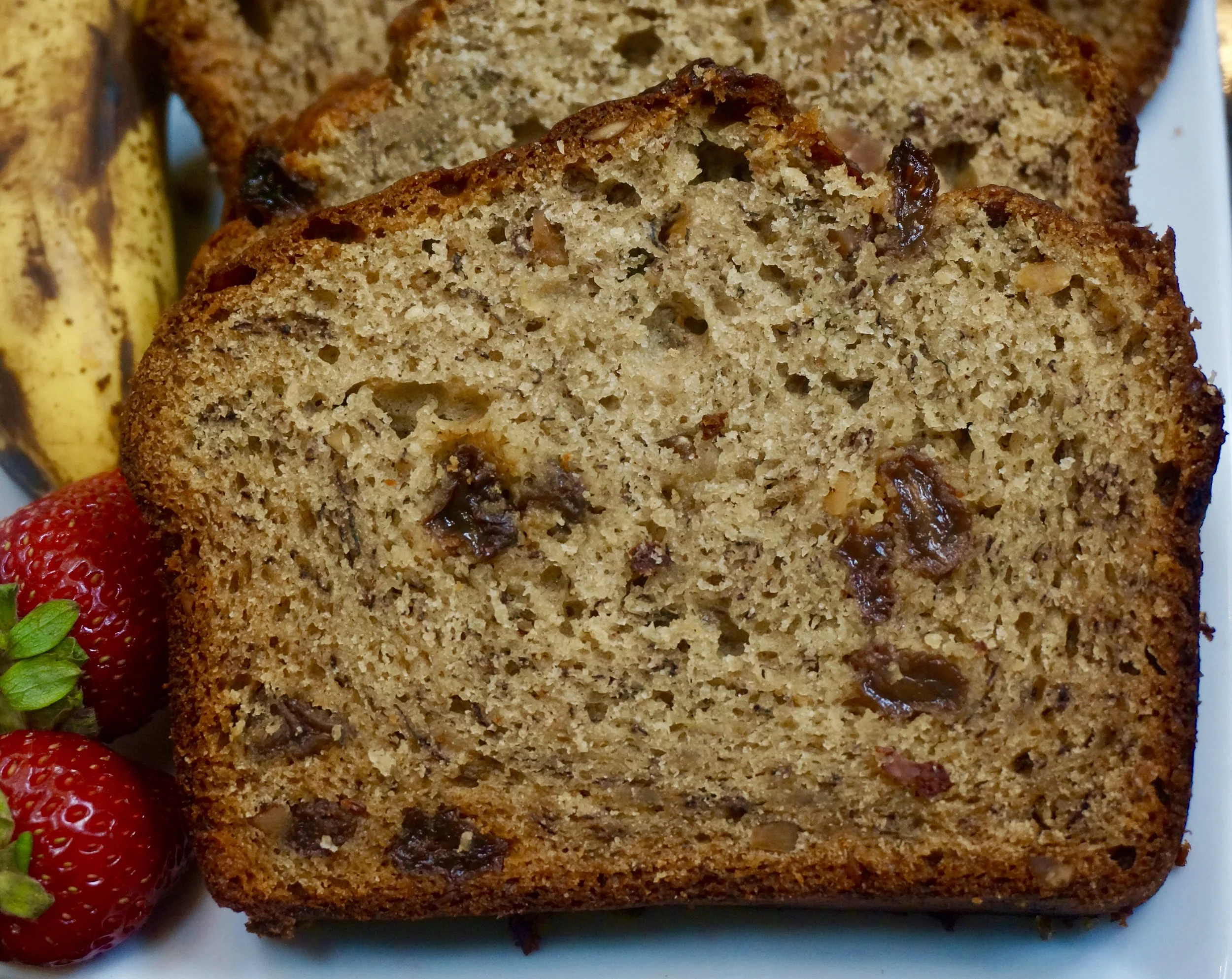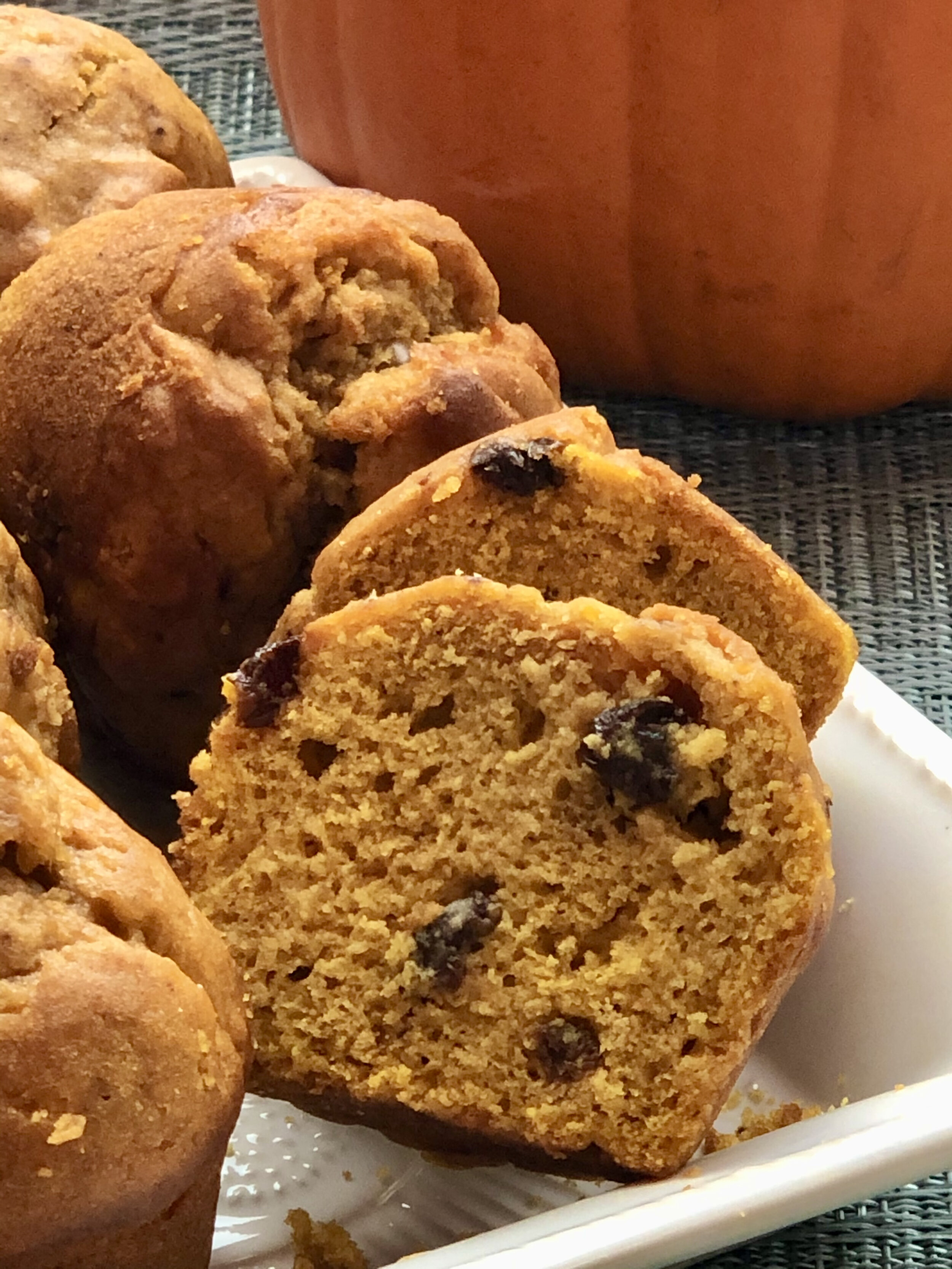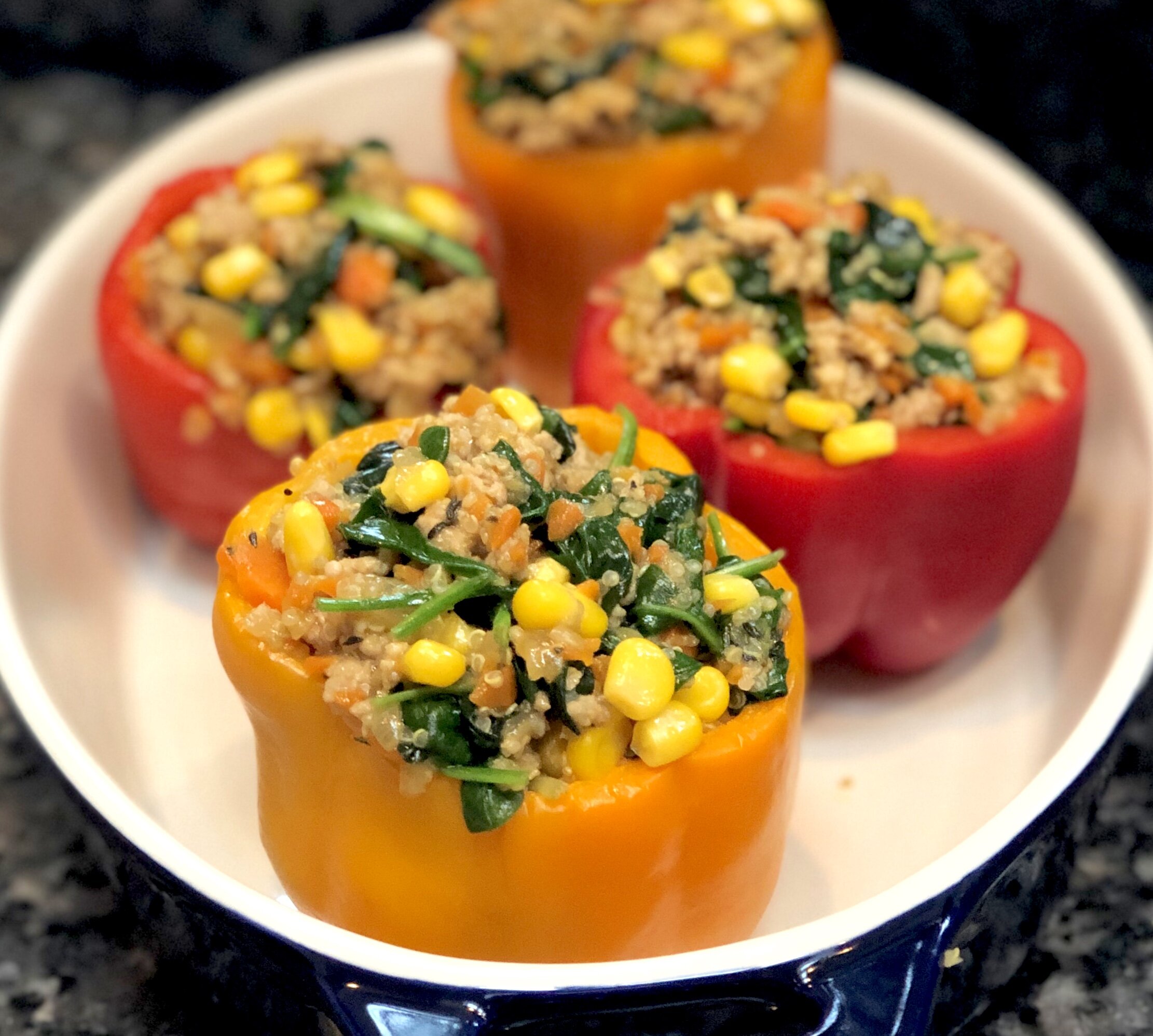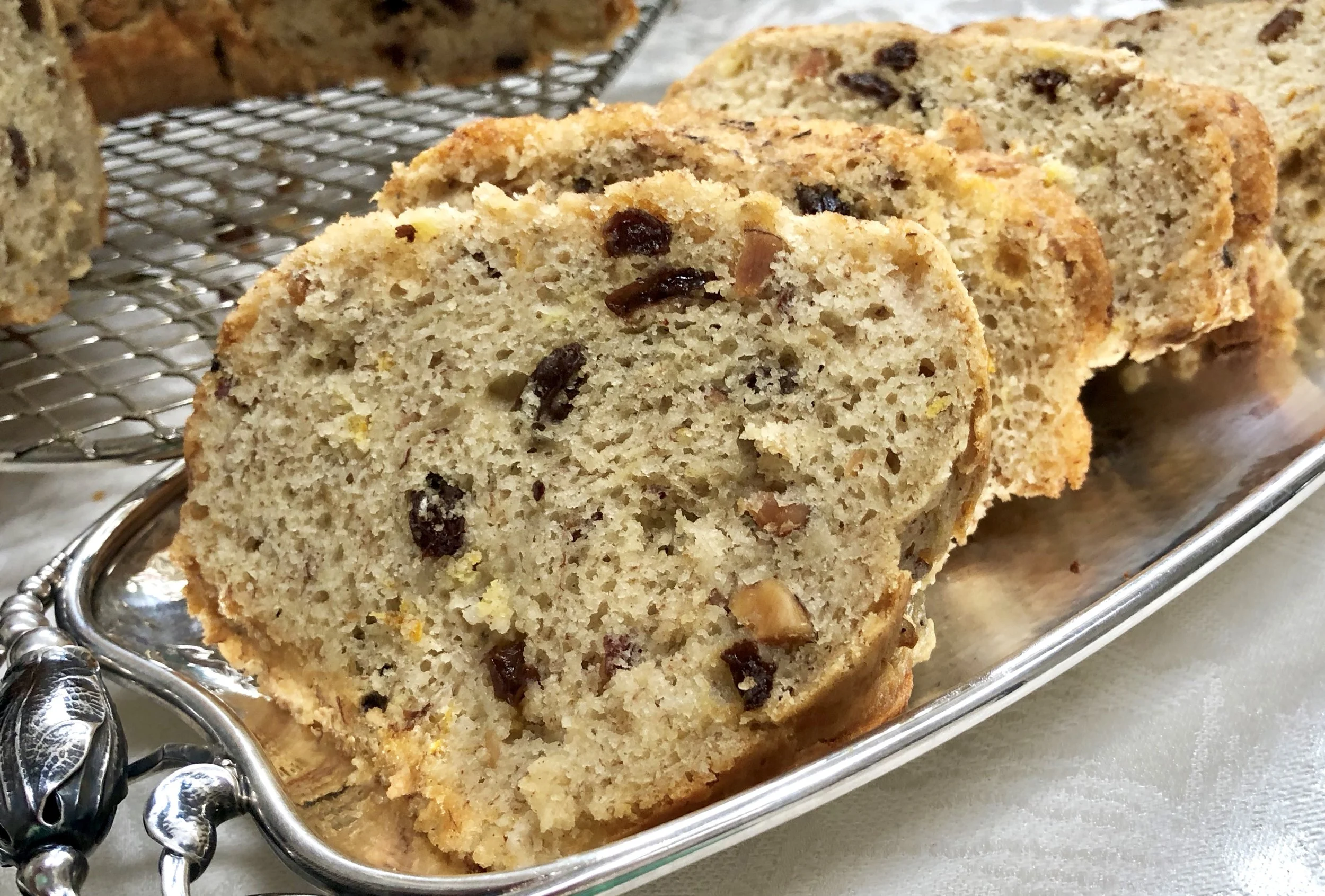Sukkot, which begins at sunset September 29th, is a harvest holiday, which means that in addition to all the ritual and religions traditions, there’s lots of food, especially stuffed foods which are proof of the harvest bounty of fruits and vegetables.
Like stuffed peppers.
I have made stuffed peppers many times for Sukkot, but in recent years have found it easier to cut them into halves. The halves are still filled, but easier to cook and to eat. They are also easier to tote to a Sukkah.
This is one of the versions that my family has loved. I’ve made it with both Israeli and Moroccan couscous and also with rice and barley. The point is to include a starchy pasta or whole grain.
Btw, I cut the peppers in the middle, into top and bottom halves but obviously you can cut them from the stem down and have two top-and-bottom halves.
Vegetarian Stuffed Red Pepper Halves
4 red bell peppers
1/2 cup couscous (or use rice, barley, etc.)
2 tablespoons olive oil
1 medium onion, chopped
2 cups halved cherry or grape tomatoes
1 cup thawed frozen peas
2 beaten eggs
1 cup shredded mozzarella cheese
3 tablespoons grated Parmesan cheese
Preheat the oven broiler. Cut the peppers in half. Discard the stems and seeds. Place the pepper halves, skin side up, on a parchment paper lined baking sheet. Broil the pepper halves for 4-5 minutes or until the skin darkens and blisters. Remove the peppers, wrap them in foil or place them in a bag and let them cool. When cool, remove the skin and place the pepper halves, hollow side up, on a parchment paper lined baking sheet. Set aside. Turn the oven to 425F.
Cook the couscous. Place the cooked couscous in a bowl and set aside. Heat the olive oil in a saute pan over medium heat. Add the onion and cook 2-3 minutes. Add the cherry tomatoes and peas and cook 1-2 minutes. Remove from the heat and add to the cooked couscous. Pour the eggs into the pan and cook, stirring, until the eggs are set. Place them on a cutting bord and chop them into small pieces. Add them to the couscous. Spoon equal amounts of the couscous mixture inside the pepper halves. Sprinkle with equal amounts of mozzarella cheese, then sprinkle with Parmesan cheese. Bake for 12-13 minutes or until the cheese has melted and begins to turn golden brown.
Makes 4-8 servings
